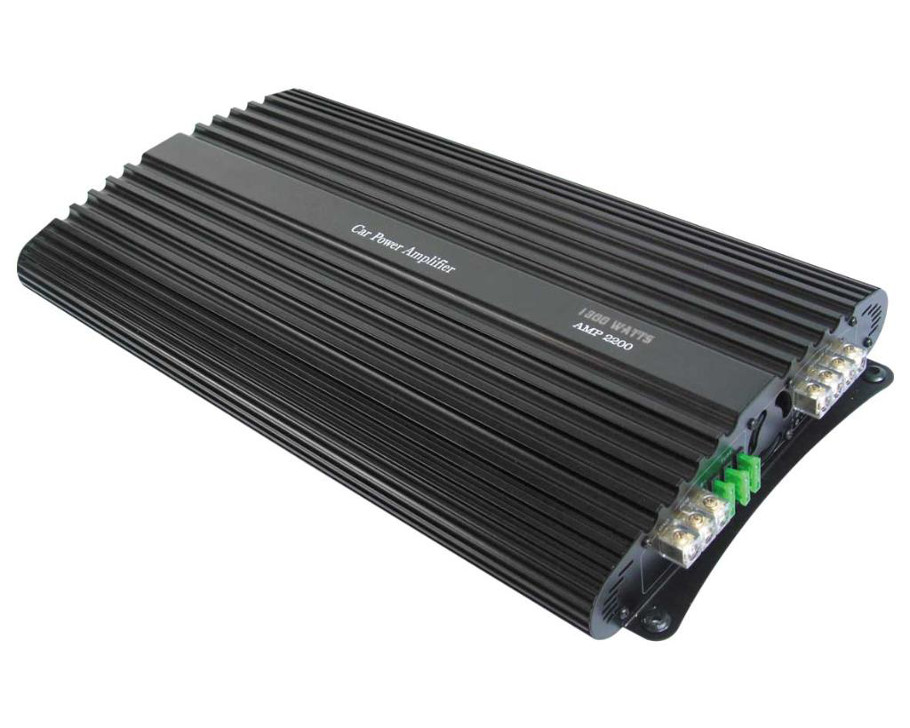About Car Audio Amplifiers
 If you are installing a high-end sound system in your car, you are likely considering the purchase of a separate power amplifier. Factory sound systems do have built-in audio amplifiers but they may not satisfy the needs of enthusiasts with a desire for powerful sound – that's when separate power amplifiers come into play.
If you are installing a high-end sound system in your car, you are likely considering the purchase of a separate power amplifier. Factory sound systems do have built-in audio amplifiers but they may not satisfy the needs of enthusiasts with a desire for powerful sound – that's when separate power amplifiers come into play.
In this article, we will look over the basic parameters that you should be knowledgeable about when choosing a power amplifier for the ultimate audio sound system in your car.
It Starts with the Head Unit
The audio that you play in your car comes from a "head unit". Head units are what you see on your dash with a radio tuner, CD player, USB port and other functions integrated. They are the source of the sounds that you are going to play through your audio system. Head units are designed to allow you to easily switch sources, change stations and adjust sound bass and treble.
Then it goes to a Pre-Amp
After the sound signal is developed in the head unit, it has to be processed by a preamplifier or "preamp." The preamp stage is also where such tone controls as bass, treble and equalization tailor the audio before it is fed to the power amplifier. Part of the preamp processing involves circuitry known as a crossover. Crossovers electronically divide the full-range audio signal amplifier into separate frequencies for woofers, mid-ranges and tweeters. Think of a crossover as an audio-signal traffic cop, directing specific frequencies so they can be reproduced by specialized speakers. Generally speaking all the pre-amp functions are performed in the head unit.
Then on to the Power Amplifier
Following the preamp processing, the sound signals are fed to a power amplifier. The amplifier is the device that creates a high-power electrical current to drive the speakers. Vacuum tubes were once used to amplify electrical signals but today automotive power amplifiers use power transistors.
During amplification, amplifiers generate heat, so heat management is a major part of an amp's design. That's why an important part of an amplifier's exterior is made up of what is known as a "heat sink." Similar to a car's radiator, the heat sink has fins that create surface area to radiate the internal heat generated by the amplifier. This brings up another point: since these heat sinks release heat, it is best to install them in a well ventilated area. Amplifier Power Ratings
Amplifier power output is measured in watts per channel. A higher wattage rating for an amplifier means more power is available to drive the speakers. The industry standard for amplifier wattage ratings is RMS. This stands for "Root Mean Square" and is a mathematical equation for measuring the magnitude of the output signal. When you are comparing different amplifiers, be sure to compare RMS ratings and not "Peak Power" ratings which are usually much higher. In fact, the Consumer Electronics Association trade group administers a voluntary car audio amplifier power measuring standard called CEA-2006-A. Look for CEA-2006-A wattage ratings on the amplifiers you are considering.
Do Your Research
Amplifiers are probably the most misunderstood part of a car audio system. Many simply want "powerful amps". As we hope you understand from the article above, don't just go for the highest power ratings. Look for CEA-2006-A certification and a high quality brand as well.
Source: Palmer Dodge










